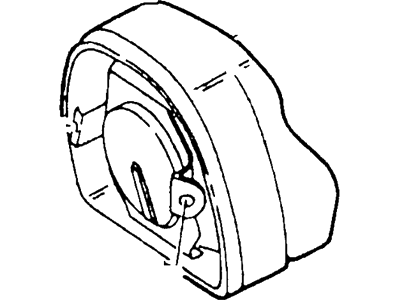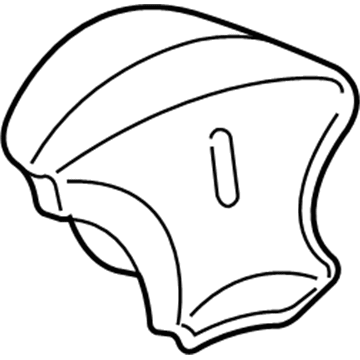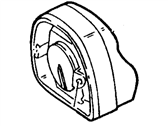

My Garage
My Account
Cart
Genuine Lincoln Town Car Air Bag
Air Bag Module- Select Vehicle by Model
- Select Vehicle by VIN
Select Vehicle by Model
orMake
Model
Year
Select Vehicle by VIN
For the most accurate results, select vehicle by your VIN (Vehicle Identification Number).
110 Air Bags found
Lincoln Town Car MODULE
Part Number: F2VY54043B13C$425.62 MSRP: $586.37You Save: $160.75 (28%)Ships in 1-2 Business DaysLincoln Town Car MODULE ASY PASSANGER
Part Number: FOVY54044A74A$490.80 MSRP: $676.17You Save: $185.37 (28%)Ships in 1-2 Business DaysLincoln Town Car Module
Part Number: F1VY54044A74J$505.63 MSRP: $696.61You Save: $190.98 (28%)Ships in 1-2 Business DaysLincoln Town Car Module Assembly - Ecu
Part Number: F8VZ-54043B13-DAC$50.47 MSRP: $70.11You Save: $19.64 (29%)Ships in 1-2 Business DaysLincoln Town Car Module
Part Number: 1W1Z-54044A74-AAA$289.38 MSRP: $402.00You Save: $112.62 (29%)Ships in 1-2 Business DaysLincoln Town Car Airbag Module
Part Number: F3VY54043B13A$15.50 MSRP: $21.54You Save: $6.04 (29%)Ships in 1-2 Business DaysLincoln Town Car Module
Part Number: F5VY-54044A74-A$109.45 MSRP: $152.05You Save: $42.60 (29%)Ships in 1-2 Business DaysLincoln Town Car Module
Part Number: 4W1Z-54043B13-AAA$256.98 MSRP: $356.99You Save: $100.01 (29%)Ships in 1-2 Business DaysLincoln Town Car Airbag Module
Part Number: F3VY54043B13B$15.50 MSRP: $21.54You Save: $6.04 (29%)Ships in 1-2 Business DaysLincoln Town Car Airbag Module
Part Number: F3VY54043B13F$46.52 MSRP: $64.63You Save: $18.11 (29%)Ships in 1-2 Business DaysLincoln Town Car Module
Part Number: F4VY54043B13D$15.50 MSRP: $21.54You Save: $6.04 (29%)Ships in 1-2 Business DaysLincoln Town Car Airbag Module
Part Number: F3VY54043B13C$17.23 MSRP: $23.94You Save: $6.71 (29%)Ships in 1-2 Business DaysLincoln Town Car Airbag Module
Part Number: F3VY54043B13D$17.23 MSRP: $23.94You Save: $6.71 (29%)Ships in 1-2 Business DaysLincoln Town Car Module
Part Number: F4VY54043B13A$17.23 MSRP: $23.94You Save: $6.71 (29%)Ships in 1-2 Business DaysLincoln Town Car Module
Part Number: F4VY54043B13B$17.23 MSRP: $23.94You Save: $6.71 (29%)Ships in 1-2 Business DaysLincoln Town Car Module
Part Number: F4VY54044A74D$17.23 MSRP: $23.94You Save: $6.71 (29%)Ships in 1-2 Business DaysLincoln Town Car Module
Part Number: F3VY54044A74B$21.74 MSRP: $30.21You Save: $8.47 (29%)Ships in 1-2 Business DaysLincoln Town Car Module Assembly Passenger Airbag
Part Number: F5VY54044A74B$21.74 MSRP: $30.21You Save: $8.47 (29%)Ships in 1-2 Business DaysLincoln Town Car Airbag Module
Part Number: FOVY54043B13G$23.90 MSRP: $33.21You Save: $9.31 (29%)Ships in 1-2 Business Days
| Page 1 of 6 |Next >
1-20 of 110 Results
Lincoln Town Car Air Bag
We provide a wide range of Lincoln Town Car Air Bag at the best prices possible. If you need Lincoln Town Car Air Bag, you can shop with confidence on our website. All our OEM parts come with a manufacturer's warranty and are delivered to your door step with a fast delivery service.
Lincoln Town Car Air Bag Parts Questions & Experts Answers
- Q: What is the purpose and components of the Supplemental Inflatable System (SIR) and Air Bag in Lincoln Town Car?A:Later models are equipped with a Supplemental Inflatable System (SIR), more commonly known as an airbag. This system is designed to protect the driver, and on some models, front seat passenger, from serious injury in the event of a head-on or frontal collision. It consists of an airbag module in the center of the steering wheel and the right side of the instrument panel, two crash sensors mounted at the front and the interior of the vehicle and a diagnostic monitor which also contains a backup power supply located in the passenger compartment. The drivers-side airbag inflator module contains a housing incorporating the cushion (airbag) and inflator unit, mounted in the center of the steering wheel. The passenger-side airbag is mounted above the glove compartment and designated by the letters SAS (Supplemental Restraint System). Models from 2000 and later may have optional side-impact airbags. These airbags are mounted at the side of the driver and front passenger seatbacks, and are designed to cushion the driver or passenger's head from hitting the glass or the door pillar. The system has three sensors: two forward sensors at the front of the vehicle and a safing sensor on the left side of the cowl in the passenger compartment. The electronic diagnostic monitor supplies the current to the airbag system In the event of the collision, even If battery power is cut off. Whenever working in the vicinity of the steering wheel, steering column or near other components of the airbag system, the system should be disarmed. To do this, perform the following steps:Turn the Ignition Switch to Off.Detach the cable from the negative battery terminal, then the positive cable and wait 2 minutes for the electronic module backup power supply to be depleted. To enable the system,Turn the ignition switch to the Off position.Connect the positive battery cable first, then the negative cable.















